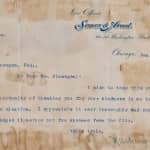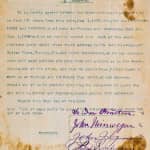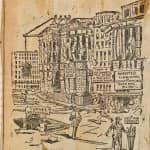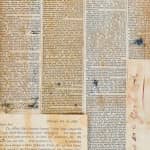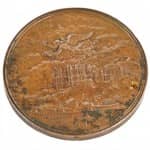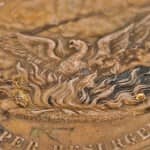a 19th century chicago alderman's scrapbook discovered under the floorboards of a house slated for demolition
This entry was posted on June 9 2016 by Eric
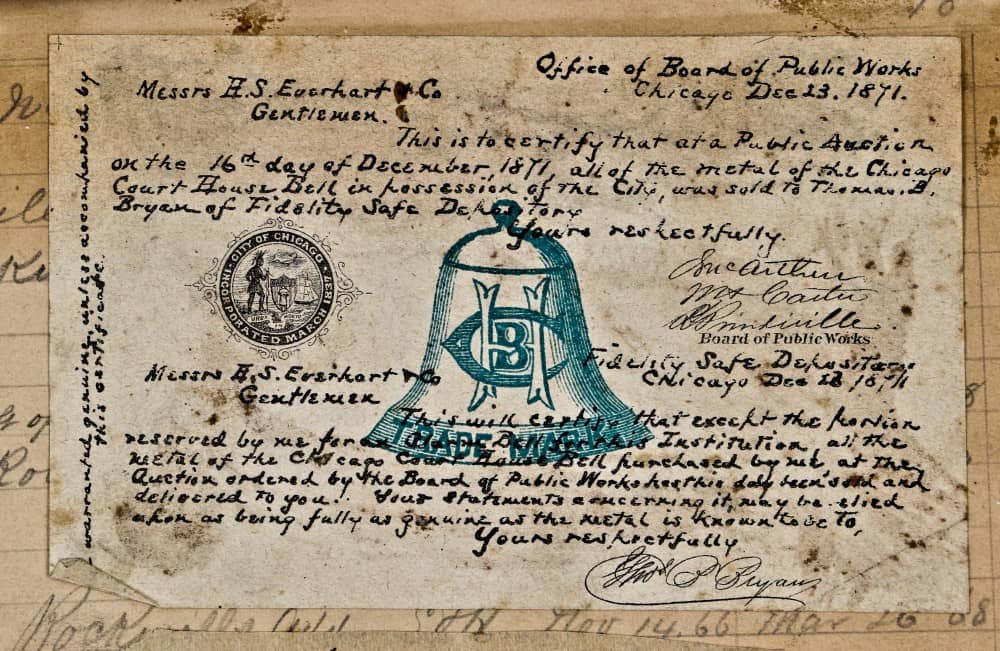
when salvaging a house slated for demolition, i first and foremost size up both the interior and exterior elements that need to be removed, documenting the "before and after" as a critical facet of the narrative which i set out to capture on each site. and yet, often the most interesting finds may not reflect the architectural merit of the house facing death. both basements and attics have proven time and again to yield some incredible artifacts, containing unusual remnants left behind or forgotten by the occupants that resided there. this post sheds light on just that, a heavily worn, but largely intact scrapbook discovered under floorboards in the house's attic. the scrapbook dates to the 19th century and is filled with abundant newspaper clippings, deeds, an official stamp "seal" of the city of chicago, some chicago fire-related ephemera and scribbling or "notes" made by the compiler of this interesting assemblage, himself a prominent chicagoan.
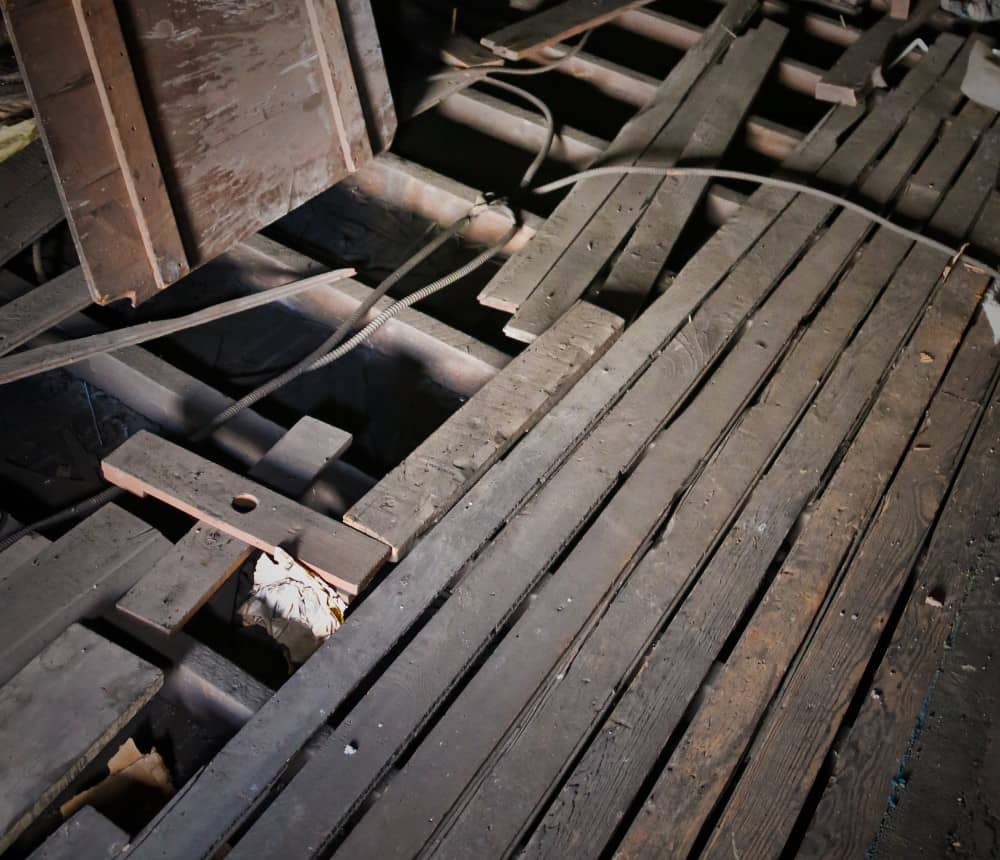
the lot of papers was gathered by john minwegen, who resided at 84 walton place, and worked as a furniture maker before becoming an alderman. according to a nicely preserved embossed business card, minwegen worked in some capacity with r. rothschild's sons, a saloon fixture manufacturer. the company resided at 220-232 east kinzie, which interestingly enough, originally housed the western electric company from 1872-1883, after which time they erected their first building at clinton street.
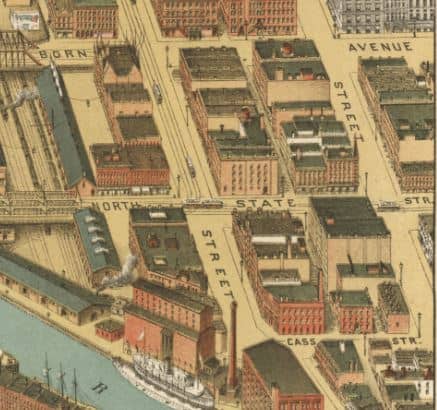
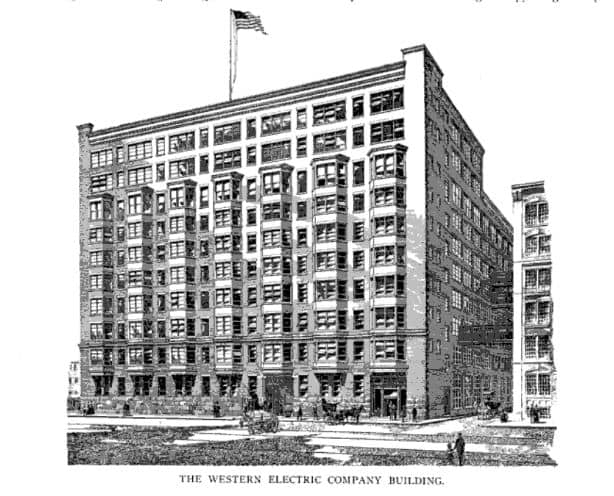 according to an 1880 publication, r. rothschild's sons manufactured the most extensive line of products in the world, including sporting goods, beer coolers, hotel furniture, billiard tables, and fixtures for barbers, saloons, and offices. the business itself was founded in cincinnati, ohio in 1866 by r. rothschild. when he passed away in 1881, the business was left to his sons, julius, charles and david rothschild. the company supplied bars and fixtures for all the principal hotels across the country, and opened its offices in chicago in 1881, the same year the business passed into the founder's son's hands.
according to an 1880 publication, r. rothschild's sons manufactured the most extensive line of products in the world, including sporting goods, beer coolers, hotel furniture, billiard tables, and fixtures for barbers, saloons, and offices. the business itself was founded in cincinnati, ohio in 1866 by r. rothschild. when he passed away in 1881, the business was left to his sons, julius, charles and david rothschild. the company supplied bars and fixtures for all the principal hotels across the country, and opened its offices in chicago in 1881, the same year the business passed into the founder's son's hands.
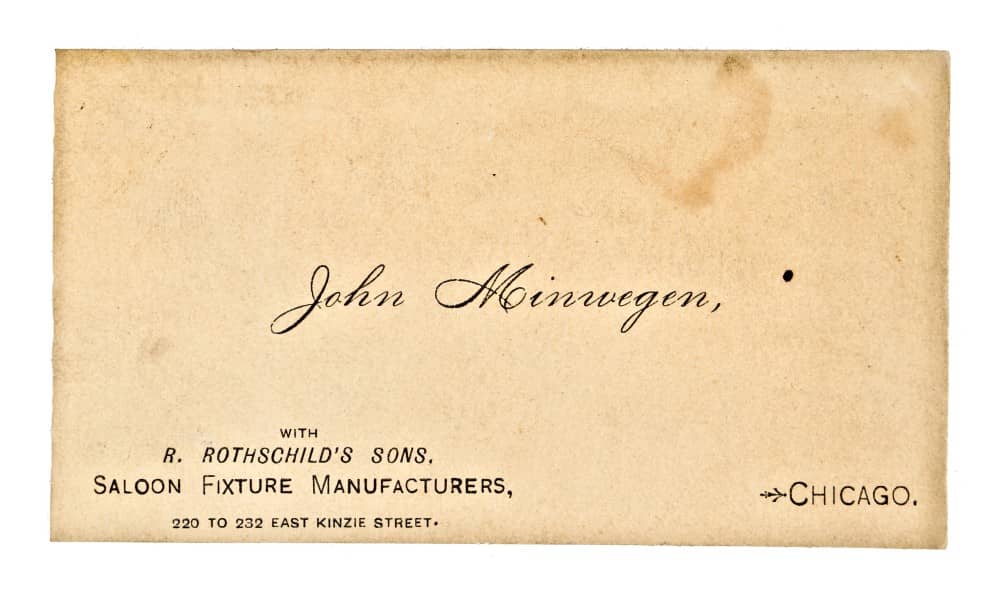
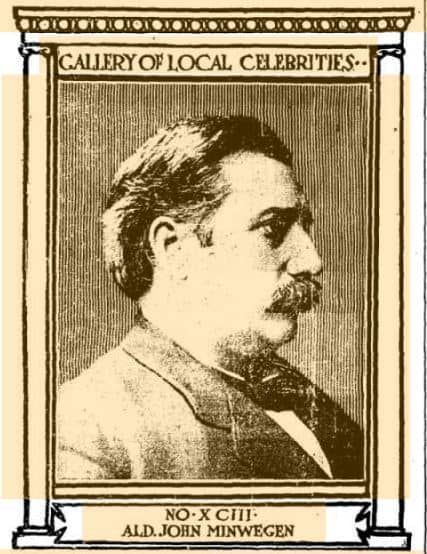
as for john minwegen, the scrapbook compiler was a chicagoan of german descent born in november 1855 at 258 north franklin street. according to record he worked in a grocery store, butcher shop, crockery, glassware house, and as a printer's devil on the old chicago union. in 1872, he entered the furniture trade, employed first by the rothschild's family business. for ten years minwegen was in the furniture departments of two other stores (casey's and revell's in fifth avenue), when in 1888, he formed the l. gerlinger company. the following year he organized the minwegen & weiss manufaturing company (at 195 washington street) specifically for office furniture and fixtures. an image of the factory within the scrapbook depicts a 4 story block structure with rounded window hoods and a decorative cornice.

in the spring of 1894, minwegan saw hard times ahead of the world's fair, and retired from active business. by turn of the century, however, he had entered politics, becoming alderman of the 21st ward (now the 24th ward, encompassing the neighborhoods of austin, north lawndale, east and west garfield, homan square, and parts of little village). he won by virtue of his reputation as a man of great integrity. according to an 1891 issue of the chicago tribune, minwegen first became known for opening the 25th street bathing beach one summer, organizing, and himself participating in, the clean-up of the beach when the hired laborers did not show up. after his election he was known as an exceptionally proactive city council member, personally inspecting "holes in streets into which a horse and wagon were likely to be swallowed" and having them repaired on the spot, often fixing problems ahead of time or treating the complaints which he received as if he were personally contracted to fix them.
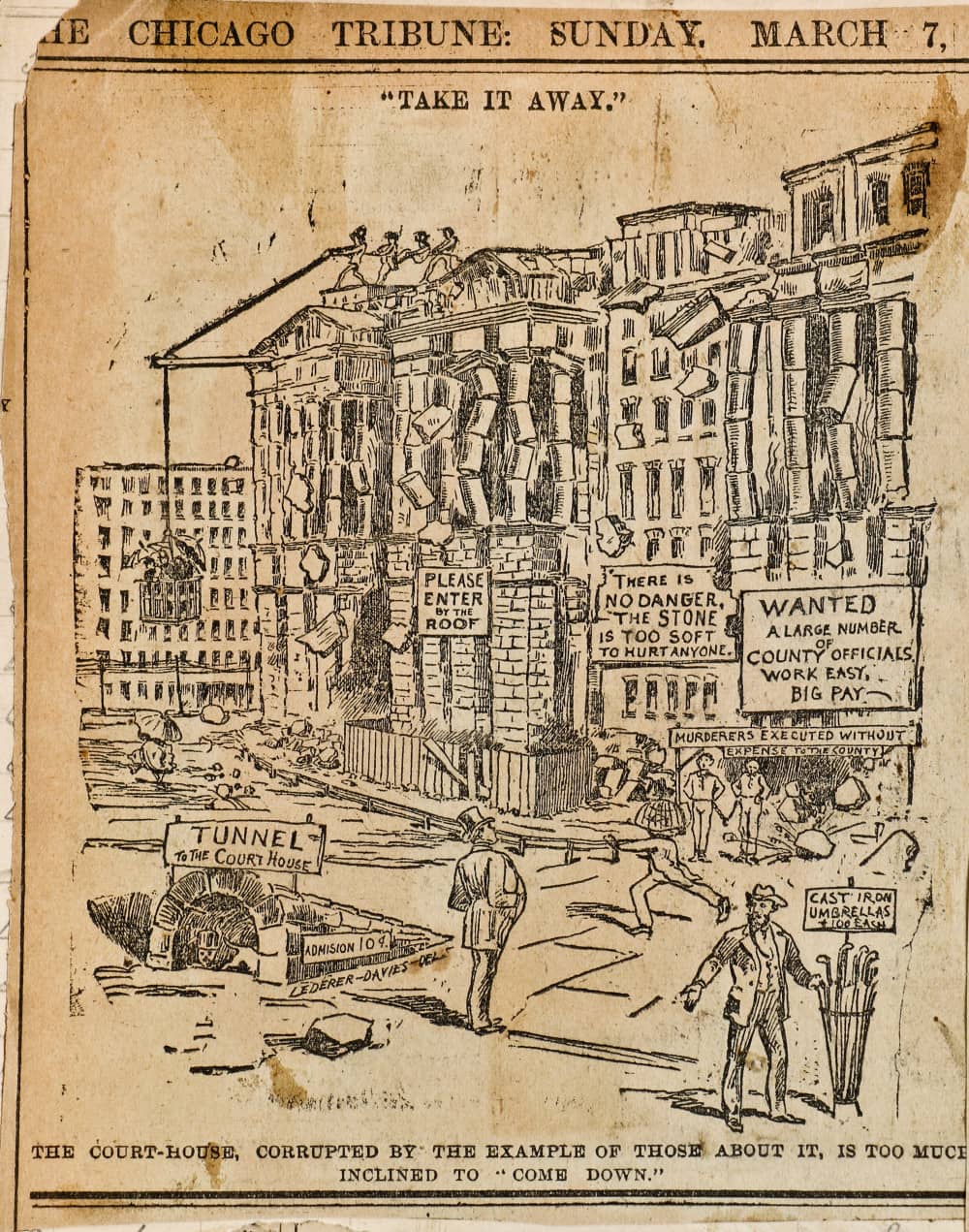

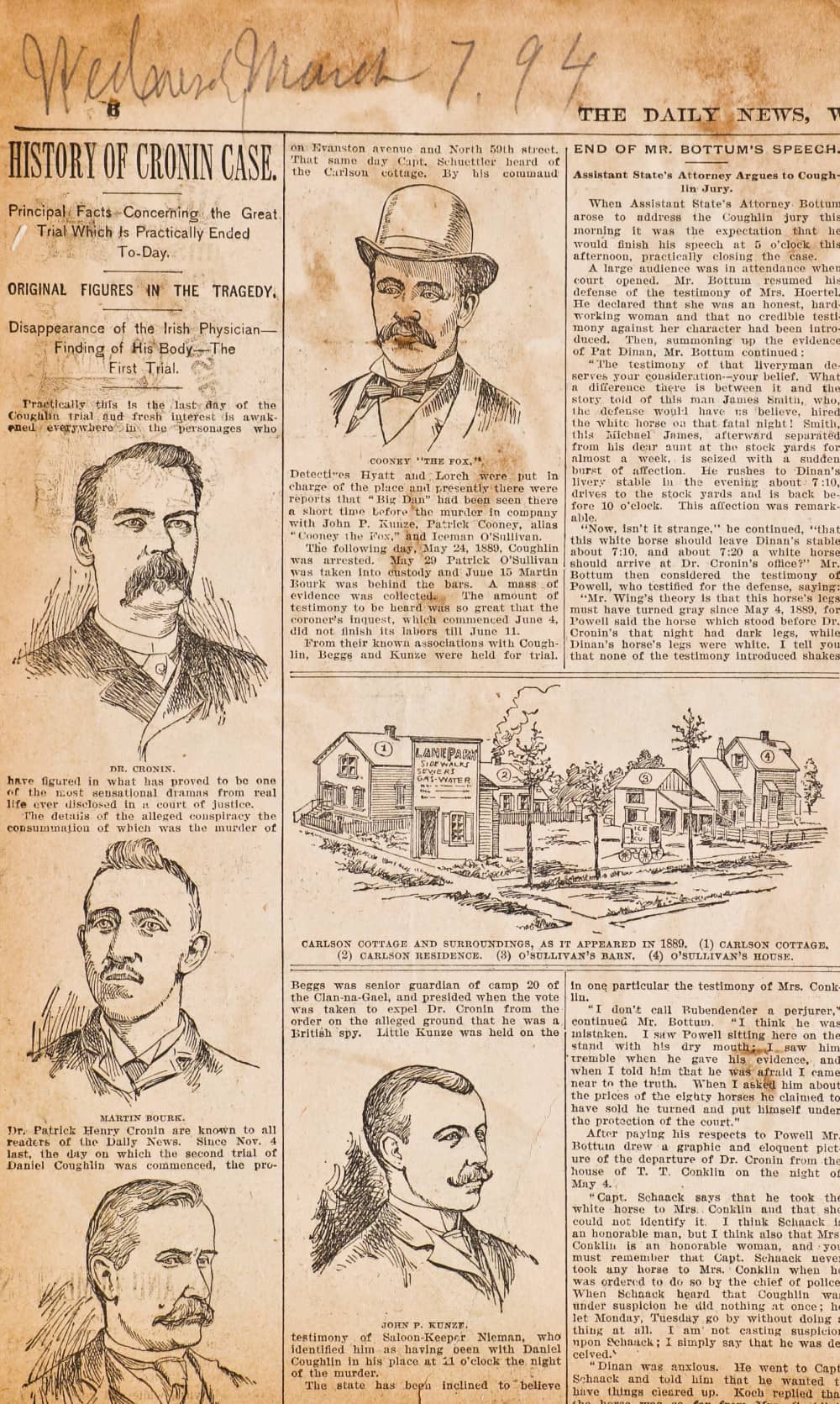
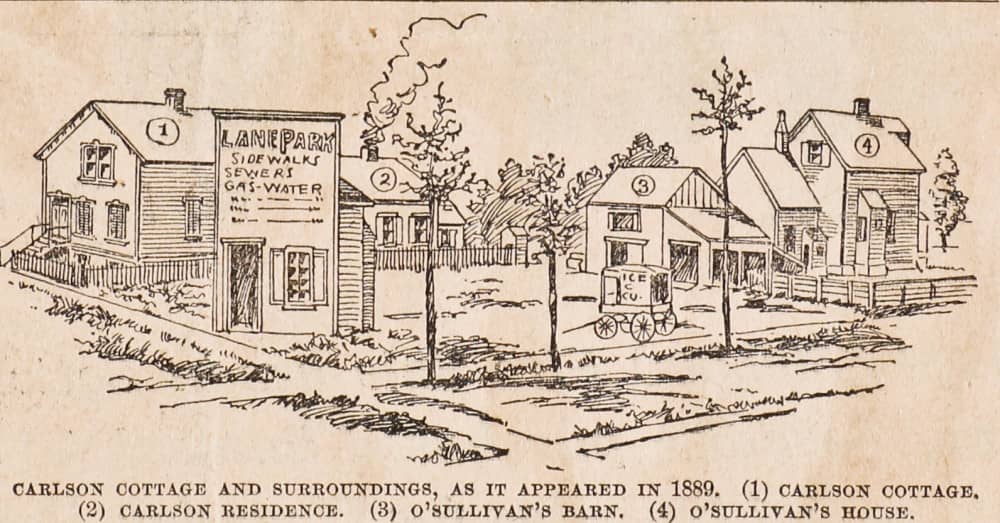
the scrapbook is brimming with fragments of news articles over a century old, but several historically important pieces plucked from the collection are worth profiling here. these include an embossed city seal, part of a color lithograph depicting the chicago fire, and a copy of the official certificate pertaining to the sale of a courthouse bell following the great fire of 1871.
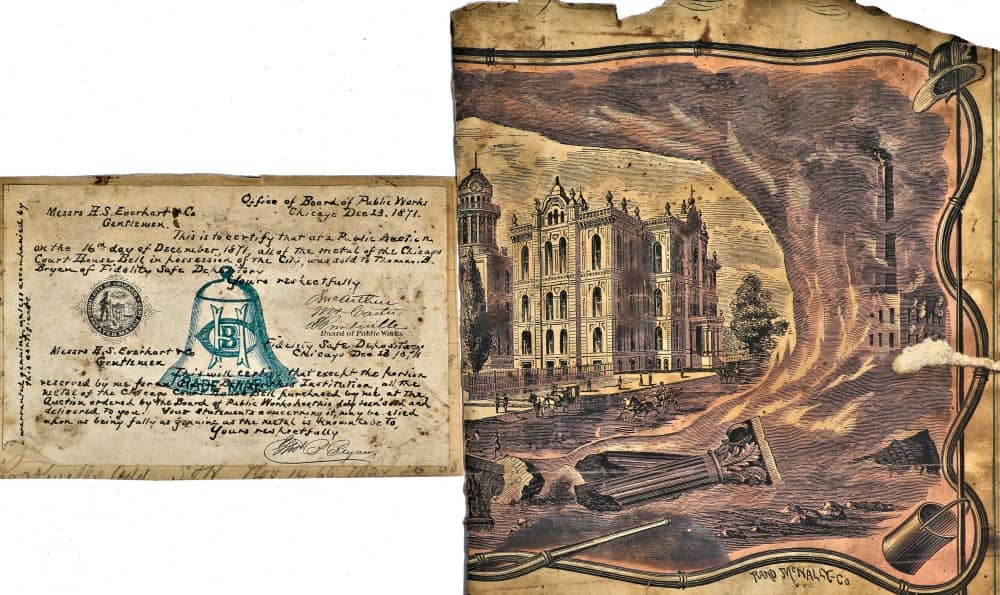
the seal, clipped from an unknown source, features heavily embossed details and pink coloration. a central shield or crest with latin phrase inside a banner is surrounded by concentric text reading, "city of chicago / incorporated 4th march 1837."
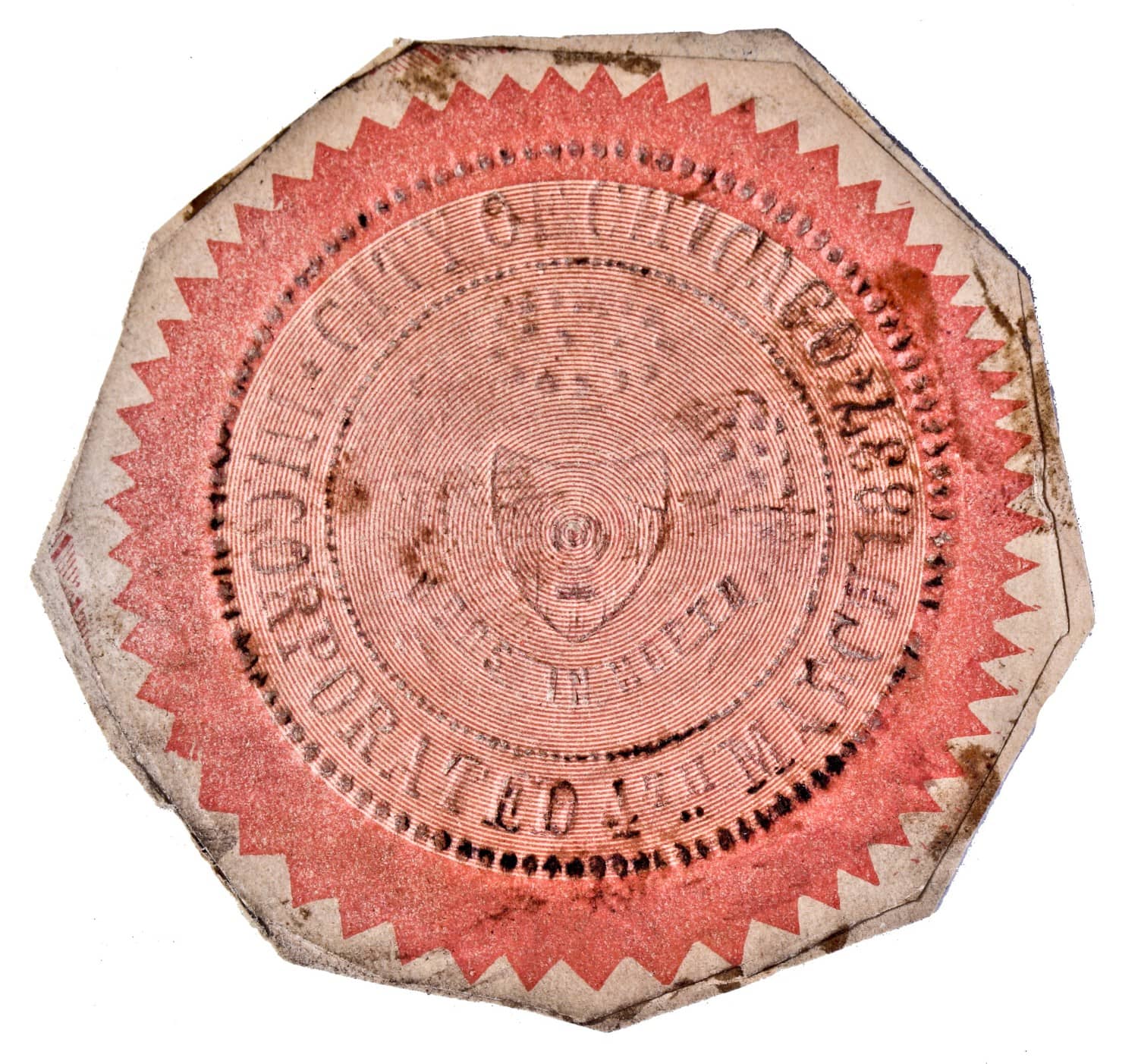
the fragment of lithograph depicts the ravages of the chicago fire within a decorative border comprised of a fire hose, and embellished with a fireman's helmet and a fire bucket. the black and white rendering of chicago's city hall or courthouse (carriages and pedestrians at street level) is depicted as a clearing, surrounded by smoke-- colored by pink or red ink-- that sweeps around toppled columns and capitals. the image bears the signature of the rand mcnally company, a business which began as a small printing shop in chicago's loop in 1856. when andrew mcnally took a job in rand's shop, they soon began a partnership which by 1868 had grown to publish tickets and timetables for the railroads. soon the company printed railroad guides, business directories and an illustrated newspaper. during the great chicago fire, rand and mcnally were personally effected, their business being in the burnt district. they apparently managed to rescue two ticket printing machines by burying them in the sand. rand and mcnally were back in business just days after the fire, and continued to grow well into the 20th century. it's possible the scrap illustrating the disaster originated in the illustrated newspaper which the publisher's distributed.
lastly, another original artifact from the aftermath of the 1871 chicago fire is a city board of public works certificate officializing the sale of the badly damaged court house bell. the completely intact paper certificate is mounted to a piece of paper, and contains a central blue stamped illustration of the bell and monogram with word "trademark" appearing beneath. the paper is notarized with a city stamp and signatures from members of the board of public works. hand-written with fountain pen, the certificate reads, "this is to certify that at a public auction on the 16th day of december 1871 all of the metal of the court house bell in possession of the city, was sold to thomas b. bryan of fidelity safe depository". thomas bryan in turn wrote, "this will certify that except the portion reserved by me for an alarm bell for this institution, all the metal of the chicago court house bell purchased by me at the auction ordered by the board of public works has this day been sold and delivered to you. your statements concerning it may be relied upon as being fully as genuine as the metal is known to be to".
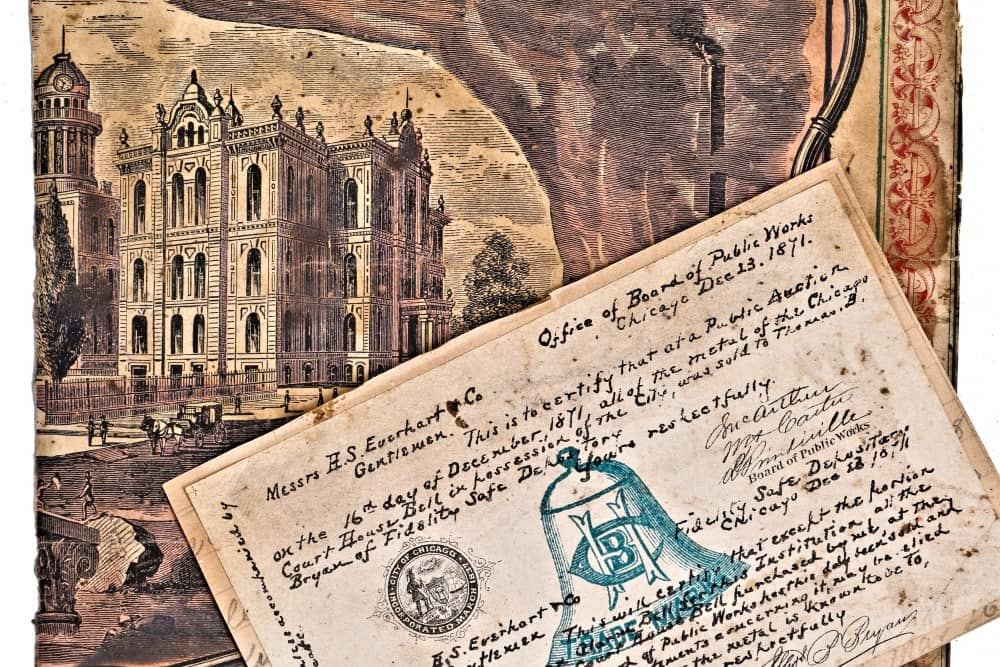
the building that held the bell was chicago's fourth city hall, constructed in 1853 by the city's first architect, john m. osdel. it was the chicago's first combined court house and city hall, and housed virtually all city and county offices , from the jail in its basement to the mayor’s quarters, the debtors’ prison, the city council, the board of public works, and the courtrooms on the upper floors. originally two stories and an above-ground basement, with the raising of the surrounding grade in the mid-1850s, the city added five feet of fill to court house square, partly burying the basement. it soon added a third floor and the cupola, with a spiral staircase leading to an observatory balcony 120 feet high, which served as a fire watchman’s walk. the two-story classically inspired cupola-crowned edifice stood in the center of the block bounded by randolph, clark, washington and la salle streets - the sight of all future court houses.
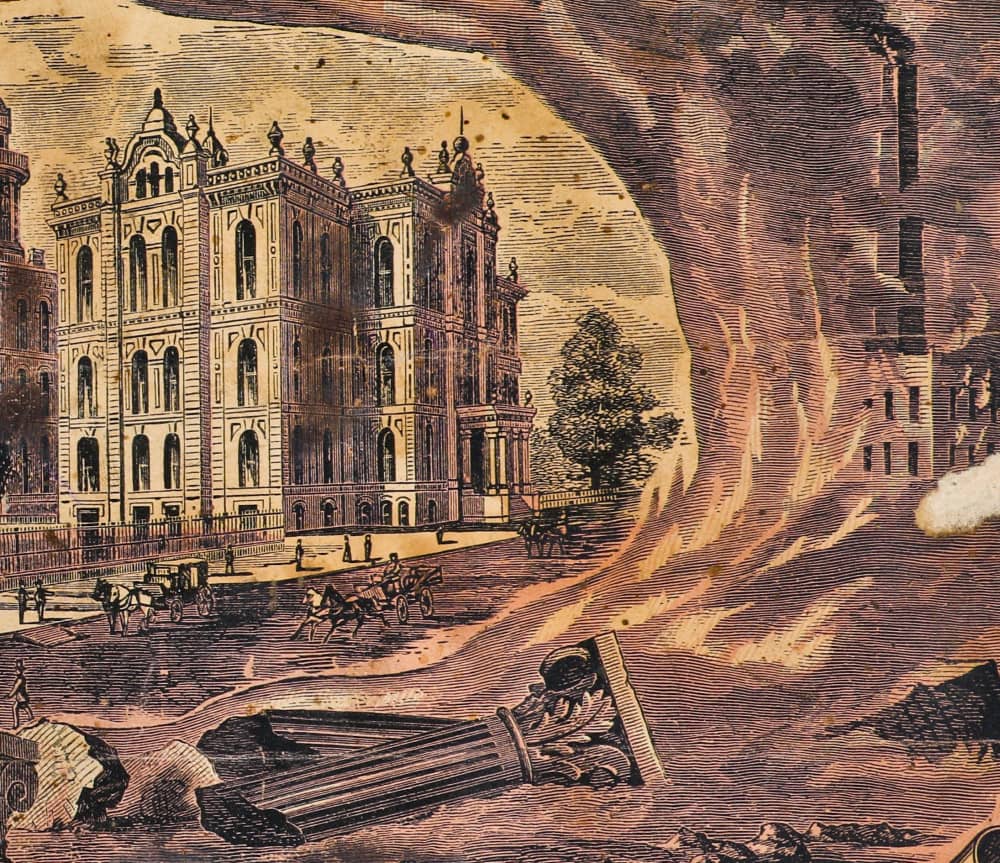
it was the bell that hung high up in the cupola that sounded the alarm of the fire, until the building itself was consumed. on october 9th at 2:20am, when city hall was ablaze, the heavily ornamented and domed rooftop cupola collapsed, sending the massive bronze bell crashing down into the rubble. an image of a man posing inside the mangled bell resting on the floor surrounded by limestone foundation walls that once supported city hall was made into a period stereoview card. it has been said that witnesses reported hearing the "crash" from a mile away. shortly after the fire was contained and rebuilding commenced, the city retrieved the badly damaged bell and placed it in storage for a few months before auctioning it off to thomas b. bryan of the fidelity repository. bryan reserved a small portion of the bell to fashion into an alarm for his own firm, then sold the rest to h. s. everhart & company. h. s. everhart in turn, melted the remainder of the bell down, and recast it into several commemorative souvenirs, with the most popular (at the time) being small replicas of the original bell. each of these small bells were accompanied by certificates of authenticity, signed by the members of the chicago board of public works. additional souvenirs included miniature fire helmets and the "fire medals."
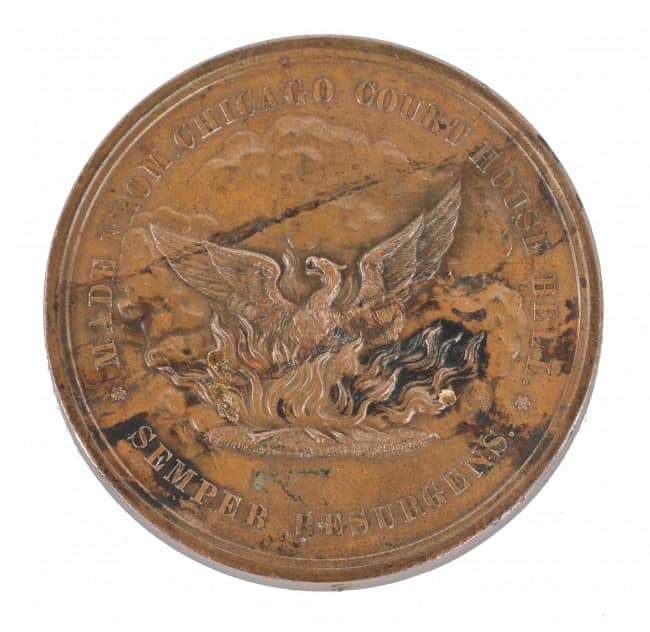
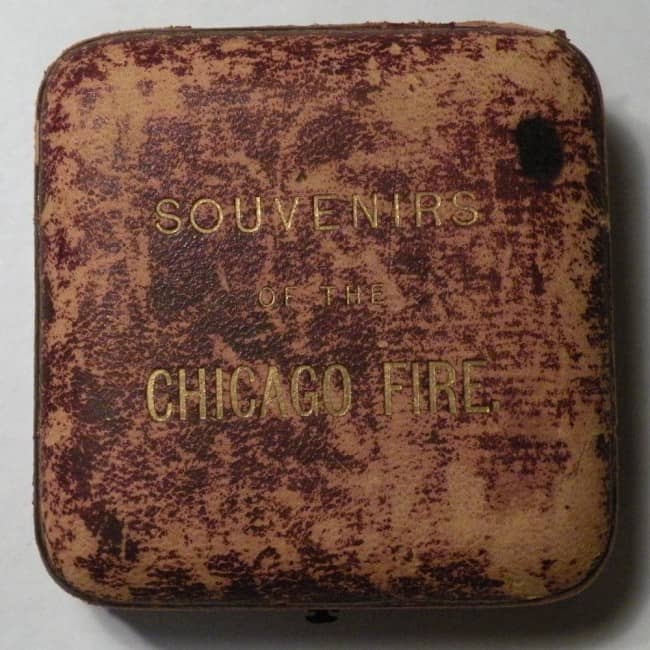
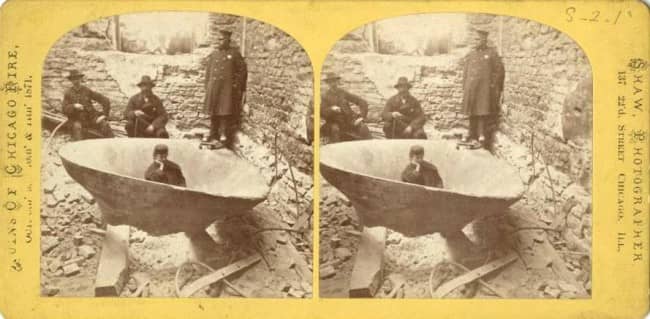
This entry was posted in , Miscellaneous, Salvages, Bldg. 51, New Products, Events & Announcements, New Acquisitions, Featured Posts & Bldg. 51 Feed on June 9 2016 by Eric
WORDLWIDE SHIPPING
If required, please contact an Urban Remains sales associate.
NEW PRODUCTS DAILY
Check back daily as we are constantly adding new products.
PREMIUM SUPPORT
We're here to help answer any question. Contact us anytime!
SALES & PROMOTIONS
Join our newsletter to get the latest information

